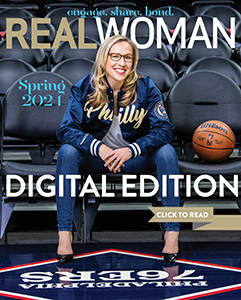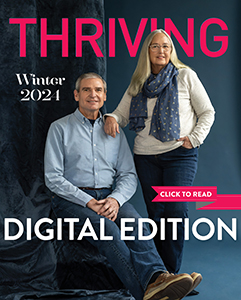Actress Julianne Moore’s mantel is filling up with awards (a Golden Globe, a Critic’s Choice, and now an Oscar) for her depiction of Dr. Alice Howard, a 50-year-old Harvard linguistics professor who was diagnosed with early-onset Alzheimer’s disease, in the film Still Alice. A positive byproduct for the rest of us is that Alzheimer’s disease—and the evolving diagnostics available to doctors—is garnering attention. And the interest is warranted because important advances are being made, even as we speak.
Peter Gliebus, M.D., director of Capital Health’s Alzheimer’s Disease and Cognitive Disorders program, says as recently as a few years ago Alzheimer’s “was a purely clinical diagnosis,” which means it was made on the basis of physical examinations, a patient’s medical history, and symptoms described by the patient, as opposed to more definitive evidence provided by lab tests or magnetic resonance imaging (MRI), for example. But in the last few years, the increased use of amyloid scans, which allow doctors to see biochemical changes in the brain, has led to more concrete diagnoses of Alzheimer’s and other neurodegenerative conditions.
It works like this: Amyloid imaging allows doctors to detect the signature change associated with Alzheimer’s—the build up of plaques, which are composed of a protein called beta-amyloid. “Amyloid imaging can spot this red flag,” says Dr. Gliebus. “Just several years ago, before we were able to get amyloid scans, the only way to diagnose someone definitively with Alzheimer’s was during an autopsy after the person died. With the advent of the amyloid imaging, we are able to pinpoint pathological chemical changes in living people’s brains. That’s a significant step because we can talk about exact diagnosis, treatment, and, potentially, a cure.”
For those reasons alone, Capital Health started using amyloid imaging as a diagnostic tool about a year ago, despite the fact that insurance is not yet covering it. While it’s a huge asset for diagnosing patients who are showing some of the tell-tale signs of Alzheimer’s—especially memory loss, disorientation, and mood changes—the diagnostic tool may also be effective in revealing the disease to doctors before symptoms have begun. “There are some people who have amyloid plaques in their brains but do not have any symptoms,” Dr. Gliebus explains. “Clinical trials are currently looking at people who are asymptomatic or at the early stages.” Treating patients earlier in Alzheimer’s progression can lead to better outcomes, he says.
These advances in diagnostics are coming at a crucial time because, according to the Alzheimer’s Association, the number of Americans with Alzheimer’s and other dementias will escalate rapidly in coming years as the Baby Boom generation ages.
“I’m happy to see that the scientific world is trying to chase the main players of what causes Alzheimer’s Disease. We will start looking at people who are asymptomatic. In the future this could be a targeted population,” Dr. Gliebus says. “You target cancer at the very beginning—we are hoping we can reach that point with Alzheimer’s. The scientific community is actually moving in that direction.”
Mind Matters
With neurodegenerative conditions, such as Alzheimer’s and Parkinson’s, nerve cells in the brain, called neurons, are damaged, Dr. Gliebus explains.
While we can’t change our fortunes against these conditions with lifestyle choices alone, there are things we can do to improve our memory, he says. “The good old things we hear every day have proven helpful for our memory. A healthy, balanced lifestyle helps our brain cell health and our overall wellbeing,” Dr. Gliebus says. “When we feel better, our cognition is better.”
Specifically, regular exercise has shown to help attention, memory, and mood. Dr. Gliebus also encourages a Mediterranean diet rich in greens, fish, and olive oils, which also has a protective effect on memory. He also recommends staying away from smoking, which, along with all the other detrimental health impacts, is not good for our long-term memory.










